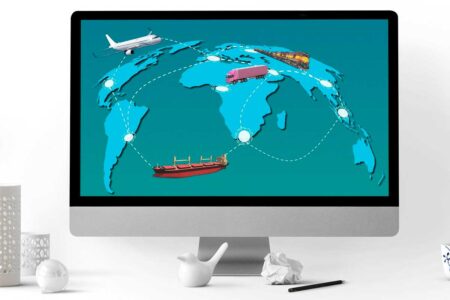The transportation sector is a significant contributor to greenhouse gas emissions and air pollution, which have serious environmental and public health impacts. Sustainable transportation solutions that reduce emissions, improve mobility, and promote social and economic equity are critical for creating a greener and more sustainable future. In this article, we will explore some of the innovative sustainable transportation solutions that are being developed and implemented around the world.

- Sustainable Transportation Challenges and Opportunities
- Leader in sustainable transport solutions
- Alternative Fuels and Energy Sources
- Shared Mobility and Innovative Transportation Modes
- Smart Transportation Infrastructure and Technologies
- Policy and Incentives for Sustainable Transportation
- Collaborative Approaches to Sustainable Transportation
- Innovative Sustainable Transport Solutions
Sustainable Transportation Challenges and Opportunities
The transportation sector faces significant challenges in terms of sustainability, including emissions, congestion, and limited resources. However, these challenges also present opportunities for innovation and change. For example, reducing emissions through low-carbon transportation options can help address climate change, while improving mobility can promote economic growth and social equity.
Leader in sustainable transport solutions
Today’s challenges to sustainable transportation are unprecedented. Cities are looking for innovative solutions to reduce emissions, increase efficiency, and improve public transit as a result of rising global temperatures and mounting evidence of climate change’s effects.
Numerous businesses have stepped up to provide environmentally friendly transportation options that may completely alter how we travel in cities. Some of the most well-known businesses in this field are Tesla, Uber, and Lyft, which offer electric cars and ride-sharing services that have revolutionized how people get around.
Other cutting-edge sustainable transportation options are, however, being created and put into use in cities all over the world. Modern technology is being used by businesses like EasyMile, SkyTran, and Hyperloop to build energy-efficient, economical, and quick high-speed mass transit systems. These devices could offer an alternative to current transportation strategies while significantly reducing greenhouse gas emissions
Meanwhile, firms like Nuro and Starship Technologies are working on autonomous delivery trucks that could fully replace conventional modes of transportation in urban areas. To improve a city’s sustainable transportation system, autonomous delivery vehicles can cut carbon dioxide emissions, noise pollution, and traffic congestion.
These businesses are just a handful of innovators in environmentally friendly transportation. New and creative technology will develop to meet the increasing global need for more effective and environmentally friendly transportation options. With so many options at their disposal, communities may now look into different techniques to lessen their reliance on conventional transportation systems and progress toward a more sustainable future.
Alternative Fuels and Energy Sources
One promising solution for sustainable transportation is the use of alternative fuels and energy sources. Bio-fuels, hydrogen fuel cells, and electric vehicles are all examples of low-carbon transportation options that can significantly reduce emissions. For example, electric vehicles are becoming increasingly popular, and they can be powered by renewable energy sources like solar and wind power, further reducing emissions.
Shared Mobility and Innovative Transportation Modes
Another innovative solution for sustainable transportation is shared mobility and innovative transportation modes. Bike sharing, carpooling, and micro-mobility options like e-scooters and e-bikes are becoming increasingly popular, providing affordable and sustainable transportation options. Shared mobility can also help reduce congestion and emissions, while improving mobility for low-income and underserved communities.
Smart Transportation Infrastructure and Technologies
Smart transportation infrastructure and technologies are also essential for promoting sustainable transportation. Intelligent transport systems (ITS), traffic management systems, and smart parking can all help improve mobility, reduce congestion, and promote sustainability. For example, ITS can provide real-time traffic information to drivers, helping them avoid congestion and reduce emissions.
Policy and Incentives for Sustainable Transportation
Government policies and incentives are also critical for promoting sustainable transportation. Fuel economy standards, emissions regulations, and incentives for low-carbon transportation options can all help reduce emissions and promote sustainability. Additionally, public-private partnerships and community-based initiatives can help promote sustainable transportation and foster collaboration between governments, businesses, and individuals.
Collaborative Approaches to Sustainable Transportation
Finally, collaborative approaches to sustainable transportation are essential for creating a greener and more sustainable future. Public-private partnerships, community-based initiatives, and stakeholder engagement can all help promote sustainable transportation and foster collaboration between governments, businesses, and individuals. By working together, we can create a more sustainable transportation system that promotes economic growth, social equity, and environmental sustainability.
Innovative Sustainable Transport Solutions
For the longest period, humans have relied on mechanized systems to go from one place to another. Even with developments in technology such as public transit and automobiles, fossil fuels continue to play an important role in how we travel around our cities and towns.
Presently, however, an increasing number of people are seeking for ways to lessen their environmental effect by leaving their car at home or taking the bus instead. Hence, to be more eco-friendly and a better citizen for the earth, try these sustainable transportation ideas:
- Ride your bike or walk small distances to save gas by not driving as often.
- If you need a new vehicle in the future, choose an ecologically friendly electric vehicle.
- There are always public transit choices accessible if they are possible for where you live, which is another wonderful way to save on gas expenditures while still traveling from point A to point B safely no matter what mode of transportation it is through (driving vs. walking). These three ideas appeal to me because they emphasize the importance of doing one’s best at all times, just in case there is no more oil available.
Finally, it is time to consider the future of sustainable transportation. The car is a thing of the past, and it’s time for you to catch up or lose ground to your competitors. Switching from fossil fuel-powered cars has numerous advantages, including improved air quality in cities, improved health outcomes due to less pollutant exposure, less greenhouse gas emissions leading to lower global temperatures, and more money saved at the pump! This isn’t only beneficial for business; it’s also how life may be.Bottom of Form







